We propose 7 cognitive stimulation exercises for older adults designed by neuropsychologists and occupational therapists to strengthen functional autonomy and slow cognitive decline in elderly people.
There is increasing evidence supporting the benefits of cognitive stimulation for older adults. Not only for people with Alzheimer’s, but also for older adults with normal aging.
Brain aging is a natural life process. However, such degeneration is not only centered on biological factors, since this decline also depends on environmental factors, such as the social and family sphere, but especially on the level of stimulation received from these areas.
That is why, at NeuronUP we design cognitive stimulation activities to strengthen users’ functional autonomy as well as to slow cognitive decline in people affected by neurodegenerative diseases such as Alzheimer’s or Parkinson’s.
7 cognitive stimulation exercises for older adults
1. Straighten Up the Kitchen
What does it involve?
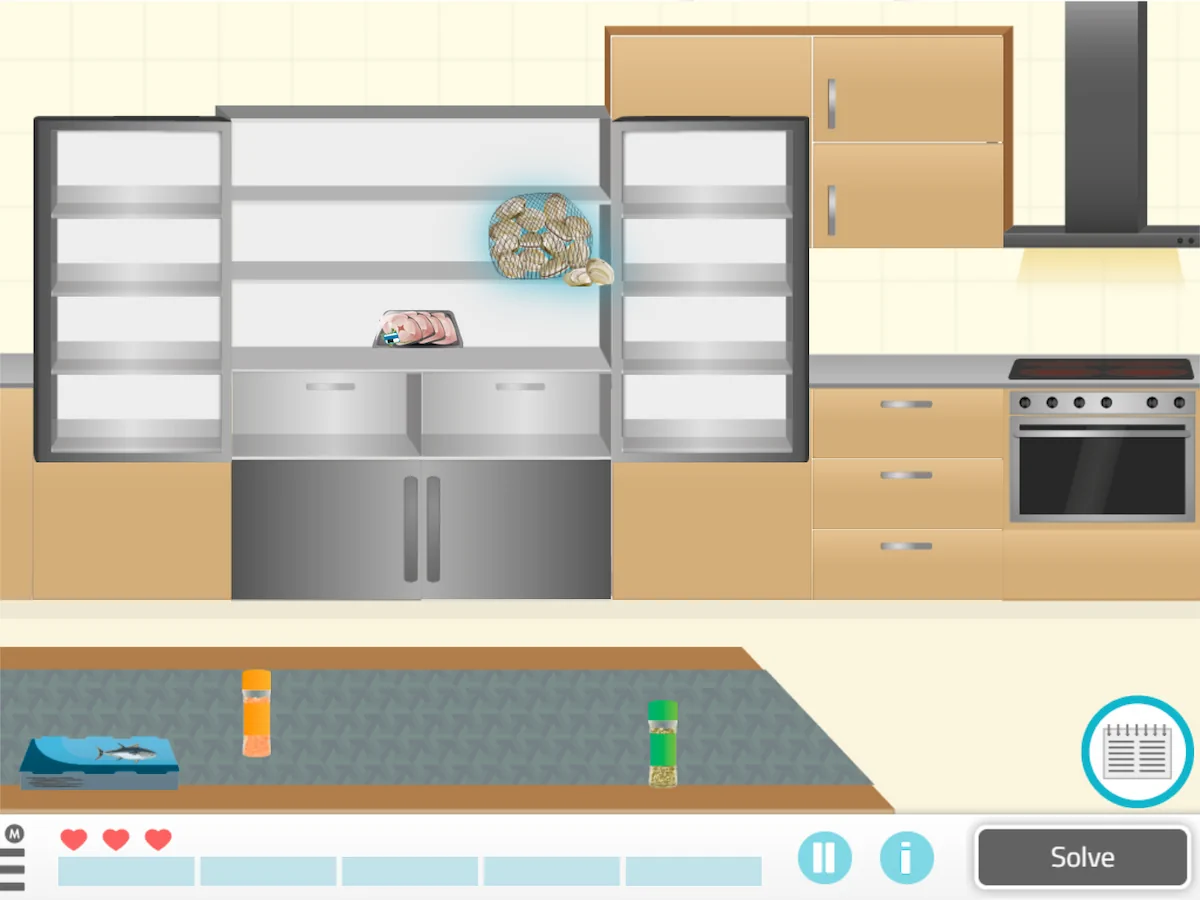
What does this activity target?
Levels
Activity personalization
Parameters
General aspects
2. Word Association
What does it involve?
This NeuronUP cognitive stimulation exercise for older adults consists of pairing words that are related to each other.
Levels
It also consists of five levels of difficulty, from a basic level to an advanced level, passing through easy, medium and hard. This way you can choose the one that best suits the users’ abilities. Below, we show an example of an easy level:
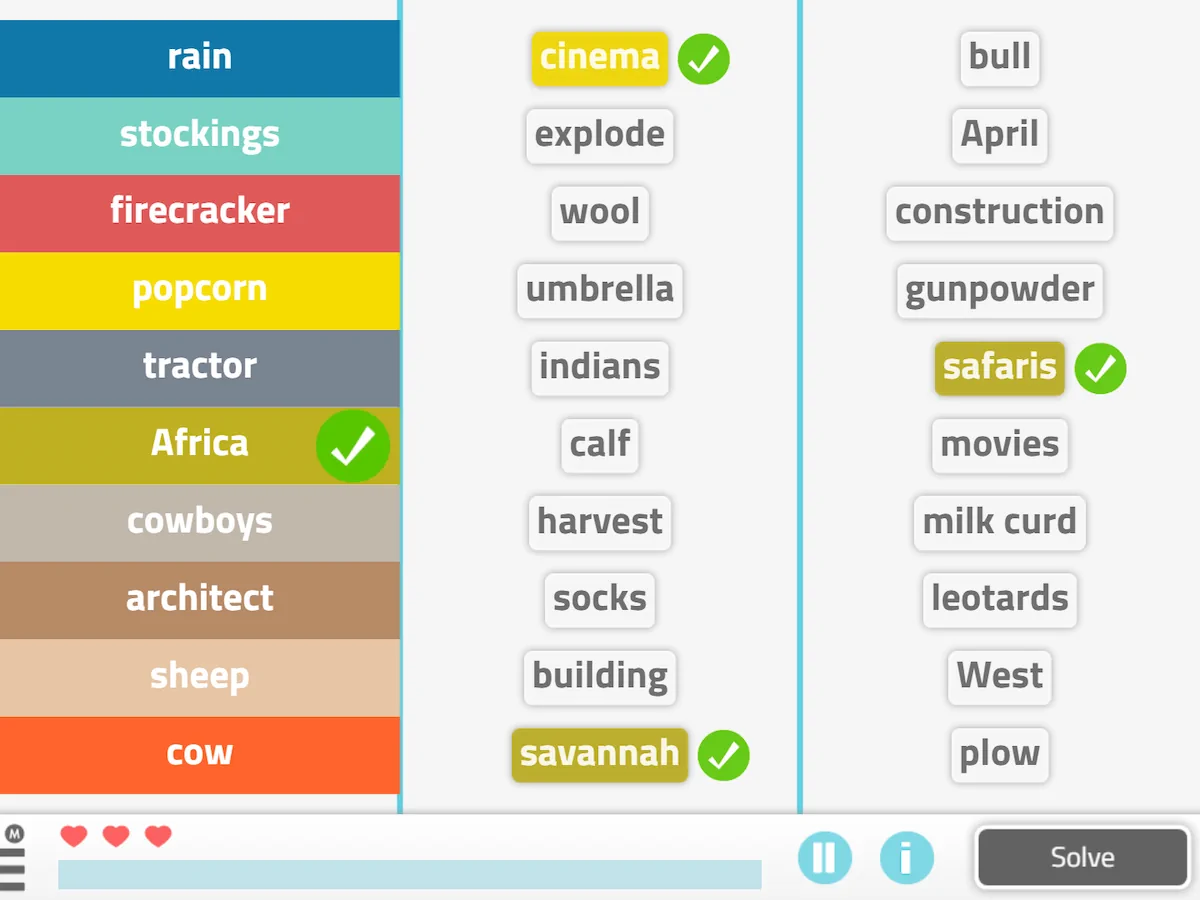
What does this activity train?
This exercise trains reasoning.
Format
This worksheet is available both in digital format and in paper format.
3. Sorting Bugs
The third of the cognitive stimulation exercises for older adults that we propose is Sorting Bugs. This game consists of reorganizing the moving insects so that each type is on its corresponding side: let beetles pass to one side and keep ladybugs on the other side. In this way, attention must be continuously focused on the movements of the insects as they approach the wall, to move the door up or down.
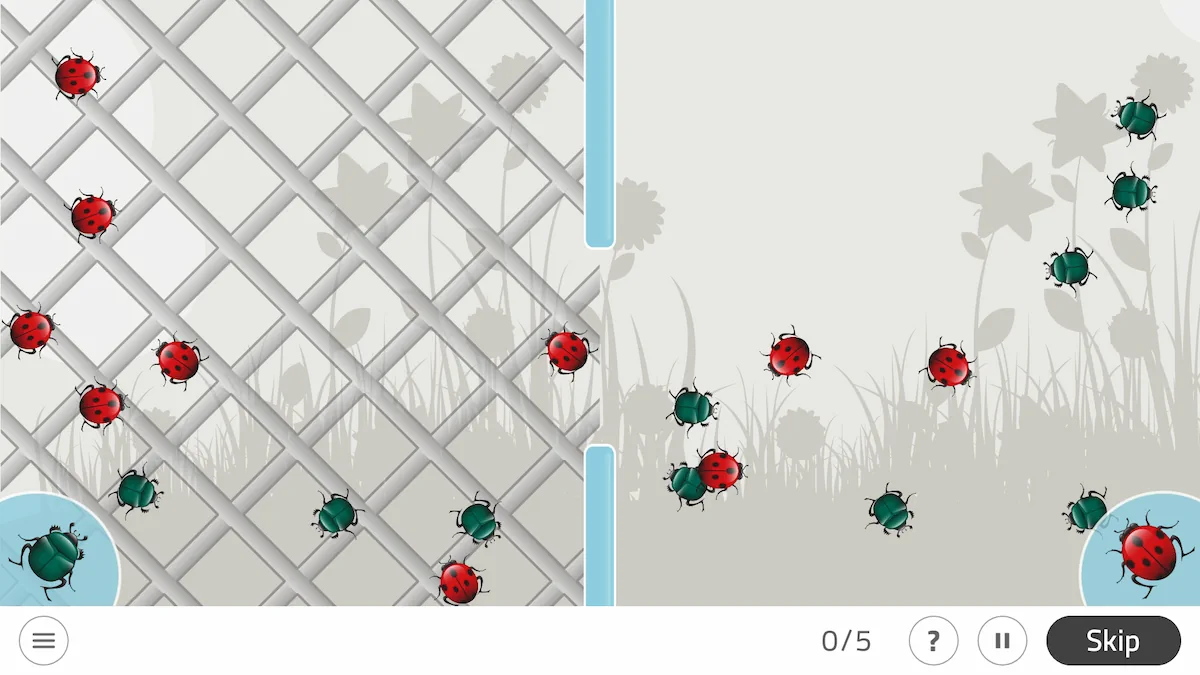
Levels
Activity personalization
Parameters
General aspects
What does this activity work on?
- Planning,
- selective attention,
- sustained attention,
- hemispatial neglect,
- processing speed.
4. Word Scramble
What does it involve?
This activity consists of ordering the letters that appear to form a word. We show you an example in the following image:
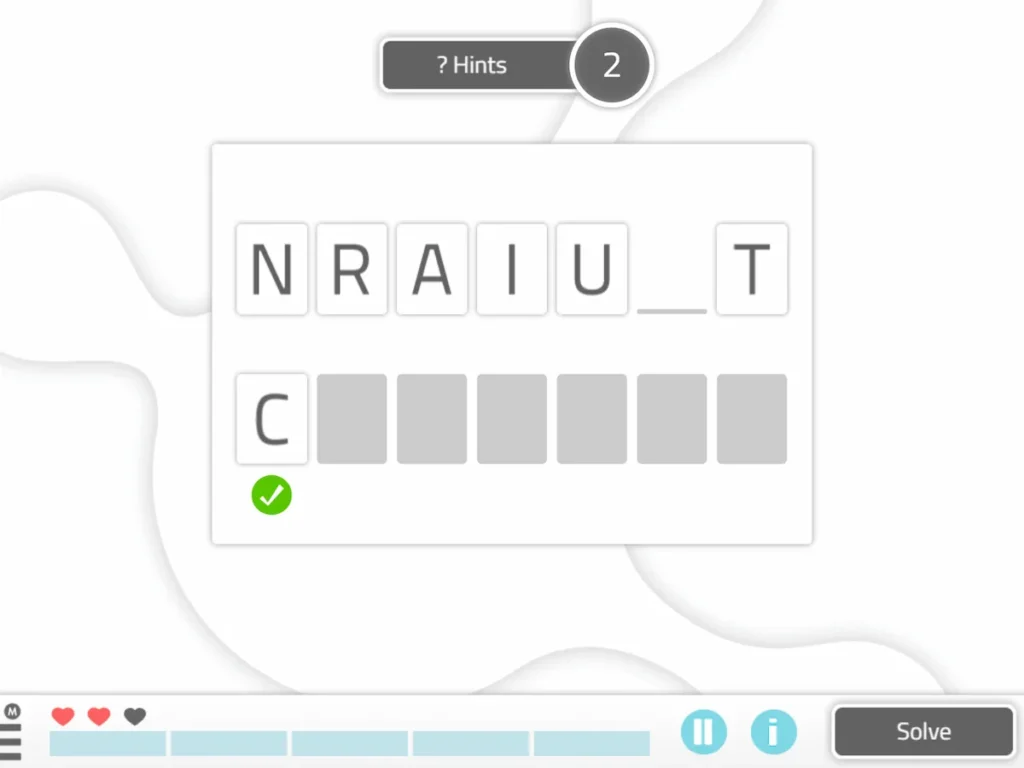
Personalization
For example, if you are working with a person who has grandchildren, you can use the names of their grandchildren, as shown in the following image. The familiarity of the names helps them focus more on the objectives of the exercise.

What does this activity train?
- Vocabulary,
- working memory
Format
Additionally, this worksheet is available both in digital format and in paper format.

Subscribe
to our
Newsletter
5. Select items from a category
What does it involve?
It consists of selecting a set of specific items from a group of stimuli. For example, in the following sheet you must select all the tools:
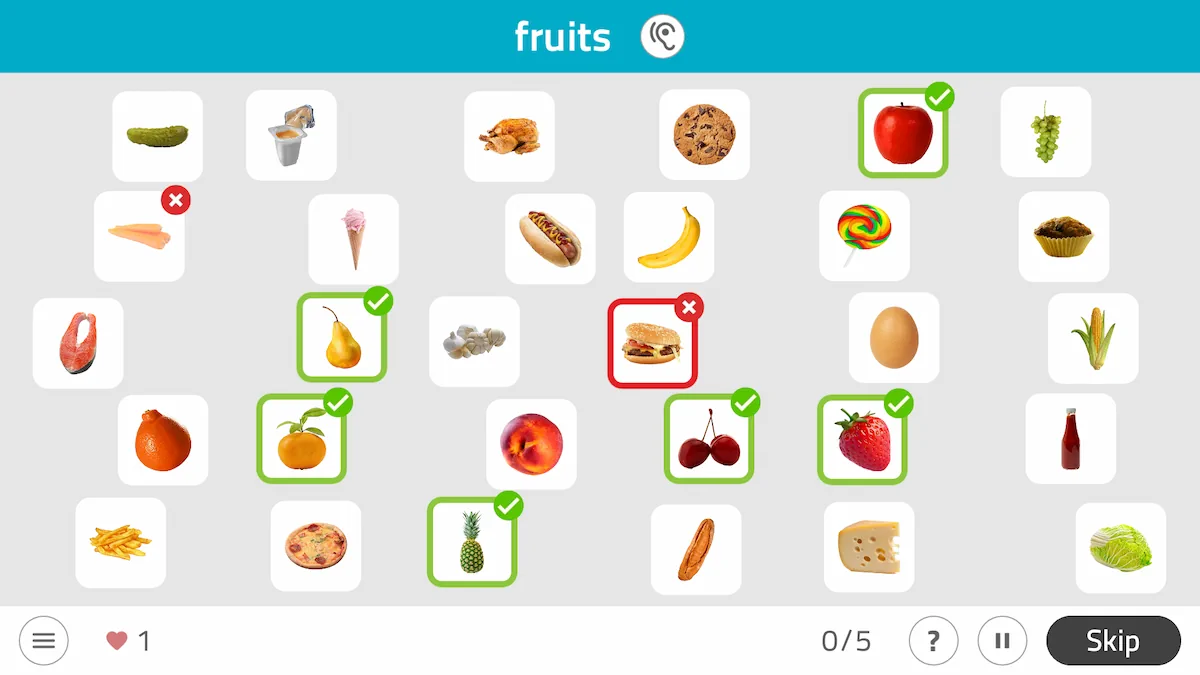
Levels
It also consists of five levels of difficulty, from a basic level to an advanced level, passing through easy, medium and hard.
What does this activity work on?
- Selective attention,
- semantic memory.
Bibliography
- Burgess, P. W., Alderman, N., Forbes, C., Costello, A., M-A.coates, L., Dawson, D. R., … Channon, S. (2006). The case for the development and use of measures of executive function in experimental and clinical neuropsychology.Journal of the International Neuropsychological Society, 12(02), 194- 209.
- Wilson, B. (1987). Single-Case Experimental Designs in Neuropsychological Rehabilitation. Journal of Clinical and Experimental Neuropsychology, 9(5), 527-544. doi:10.1080/01688638708410767
- Crete-Nishihata, M., Baecker, R. M., Massimi, M., Ptak, D., Campigotto, R., Kaufman, L. D., … Black, S. E. (2012). Reconstructing the Past: Personal memory Technologies Are Not Just Personal and Not Just for memory. Human–Computer Interaction, 27(1-2), 92-123. doi:10.1080/07370024.2012.656062
- Mihailidis, A., Fernie, G. R., & Barbenel, J. C. (2001). The use of artificial intelligence in the design of an intelligent cognitive orthosis for people with dementia. Assistive technology: the official journal of RESNA, 13(1), 23-39. doi :10.1080/10400435.2001.10132031
- Cipriani, G., Bianchetti, A., & Trabucchi, M. (2006). Outcomes of a computer-based cognitive rehabilitation program on Alzheimer’s disease patients compared with those on patients affected by mild cognitive impairment. Archives of Gerontology and Geriatrics, 43(3), 327-335. doi:10.1016/j.archger.2005.12.003
- Cohene, T., Baecker, R., & Marziali, E. (2005). Designing Interactive Life Story Multimedia for a Family Affected by Alzheimer’s Disease: A Case Study. In Proceedings of ACM CHI (pp. 2–7).
- Hofmann, M., Rösler, A., Schwarz, W., Müller-Spahn, F., Kräuchi, K., Hock, C., & Seifritz, E. (2003). Interactive computertraining as a therapeutic tool in Alzheimer’s disease. Comprehensive Psychiatry, 44(3), 213- 219. doi:10.1016/S0010-440X(03)00006-3
- Kueider, A. M., Parisi, J. M., Gross, A. L., & Rebok, G. W. (2012). Computerized Cognitive Training with Older Adults: A Systematic Review. PLoS ONE, 7(7). doi:10.1371/journal.pone.0040588
- Cassavaugh, N. D., & Kramer, A. F. (2009). Transfer of computer-based training to simulated driving in older adults. Applied Ergonomics, 40(5), 943-952. doi:10.1016/j.apergo.2009.02.001
- Basak, C., Boot, W. R., Voss, M. W., & Kramer, A. F. (2008). Can training in a realtime strategy video game attenuate cognitive decline in older adults? Psychology and aging, 23(4), 765-777. doi:10.1037/a0013494
Flnkel, S. I., & Yesavage, J. A. (1989). Learning mnemonics: A preliminary evaluation of a computer-aided instruction package for the elderly. Experimental Aging Research, 15(4), 199-201. doi:10.1080/03610738908259776 - Rebok, G. W., Carlson, M. C., & Langbaum, J. B. S. (2007). Training and Maintaining memory Abilities in Healthy Older Adults: Traditional and Novel Approaches. The Journals of Gerontology Series B: Psychological Sciences and Social Sciences, 62(Special Issue 1), 53-61.
- Jobe, J. B., Smith, D. M., Ball, K., Tennstedt, S. L., Marsiske, M., Willis, S. L., … Kleinman, K. (2001). Active: A cognitive intervention trial to promote independence in older adults. Controlled Clinical Trials, 22(4), 453- 479. doi:10.1016/S0197-2456(01)00139-8
If you liked this blog post about cognitive stimulation for older adults and want to take a look at other similar cognitive stimulation exercises for older adults, you might also be interested in the following information:
“This article has been translated. Link to the original article in Spanish:”
7 ejercicios de estimulación cognitiva para mayores
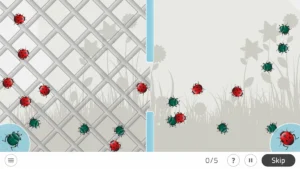
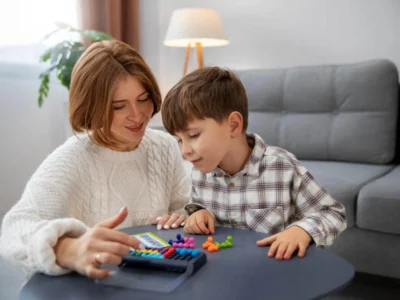
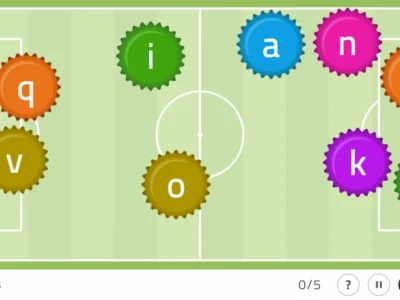


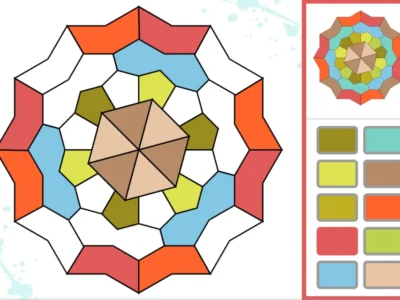
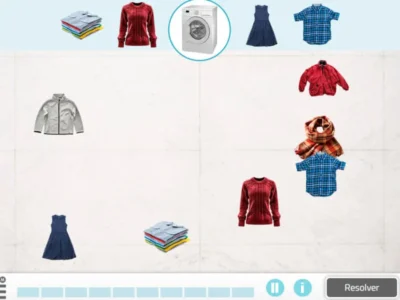
 Exercise as the brain’s best ally
Exercise as the brain’s best ally
Leave a Reply